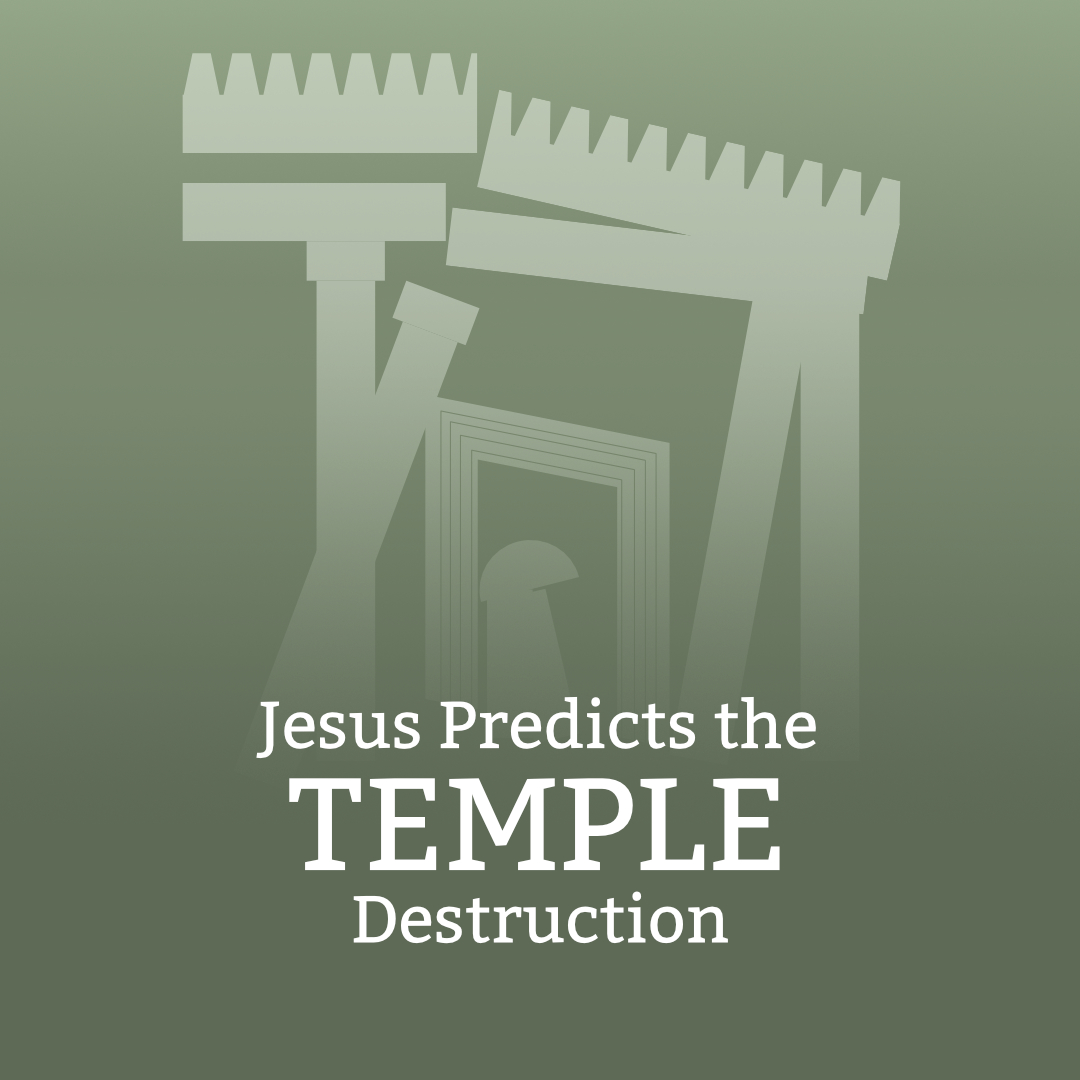Journey to the Cross: An Easter Study From Mark’s Gospel預覽


Jesus Predicts the Temple’s Destruction (Mark 13:1-37)
“Do you see all these great buildings?” replied Jesus. “Not one stone here will be left on another; every one will be thrown down.” Mark 13:2 (NIV)
Context
The background to “the abomination that causes desolation” Jesus warns about (in Mark 13:14) can be found in the book of Daniel. There, we discover that this “abomination” is:
- set up in the temple;
- by someone who ends the offering of sacrifices;
- during a time of war.
After hearing this, Peter, James, John, and Andrew (Jesus’ original audience) were likely reminded of the Greek ruler Antiochus Epiphanes. Many Jews believed that he had fulfilled Daniel’s original prophecy in 167BC when he:
- set something pagan and unclean in the temple (perhaps offering pig’s flesh on an altar to Zeus);
- forbade Sabbath-keeping, circumcision, festivals, and sacrifices;
- attacked Jerusalem on a Sabbath, knowing Jews would not resist on a holy day.
In Mark 13, Jesus seems to predict a day when something like this would happen again.
Additionally, recall that on Day 1 of this study, we interpreted the cursing of the fig tree as a prophetic depiction of God’s judgment of the corrupt temple system (Mark 11:12-21).
H. W. Hoehner, “Antiochus,” Zondervan Encyclopaedia of the Bible, 214-220
Observation
Mark 13 begins with one disciple’s exclamation on the size and magnificence of the temple (Mark 13:1). Jesus replies with a prediction: one day, this building will be destroyed (Mark 13:2).
A little later, Peter, James, John, and Andrew ask him two questions (13:3-4):
- When will the temple’s destruction occur?
- What is the sign that it is about to happen?
Read Jesus’ response carefully. Highlight the following time elements using different colors:
- “in those days” (13:17, 19-20, 24) - notice the signs preceding the events of “those days”;
- “that day or hour” (13:32-34) - notice that nobody knows this day and it will arrive suddenly
Interpretation
In Mark 13, interpreters debate if Jesus is predicting:
- Rome's destruction of the temple in AD70. After this, the temple was never rebuilt.
- The Second Coming, a day for which believers continue to wait.
- Both of these events in an interchange, which may be determined by the time elements used in each paragraph.
As you read through Mark 13, do so slowly and thoughtfully. Consider your view for the fulfillment of each paragraph.
- Was it fulfilled when the temple was destroyed by Rome?
- Is it yet to be fulfilled at the Second Coming?
- Or do you think it predicts both events in some sort of interchange?
What evidence can you offer for your view?
Application
Whether or not Mark 13 is about the Second Coming, it can still remind us that Jesus will return one day, and until that day, we are called to “Keep watch!”
As you prepare for Easter, reflect on the significance of the two comings of Jesus:
- Due to the humility of his first coming, many missed this important event. However, its purpose was fulfilled in his substitutionary death on a cross, available to all who find refuge in it. Jesus is our Suffering Servant.
- No one will miss his second coming on the clouds (Revelation 1:7). On that day, Jesus will judge the living and the dead (2 Timothy 4:2). This day is the hope of all believers, enabling us to endure hardship because of the certainty of his return. Jesus is our Conquering King.
關於此計劃

This plan will guide you through an inductive study of Jesus’ journey to the cross, beginning with the triumphal entry into Jerusalem. Grab a notebook to jot down your thoughts as you are led through a process of (1) observing the events of Passion Week, (2) interpreting the original message to the church in Rome, and (3) applying the Easter story’s timeless truths to your life today.
More









